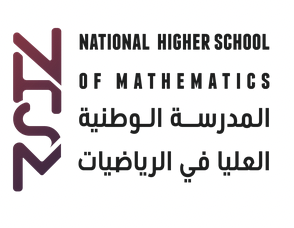|
Courses
Algebraic Number Theory
(Peter Stevenhagen and Margherita Pagano)
The course will focus on aspects of the arithmetic in number fields that are particularly relevant for the cryptographic applications in the school. Key notions: general number rings, ideal factorisation, Picard groups and unit groups. The number field sieve is treated as an important application, and imaginary quadratic orders occurring as endomorphism rings of elliptic curves will be treated in detail.
References :
D.A. Marcus, Number Fields.
J. S. Milne, Algebraic number theory, available at:
https://www.jmilne.org/math/CourseNotes
P. Stevenhagen, Number rings, available at: https://websites.math.leidenuniv.nl/algebra
|
Elliptic Curves
(Adel Betina and Valerio Talamanca)
Elliptic curves play a central role in both mathematics and cryptography due to their elegant and multifaceted structure, which encompasses rich arithmetic, geometric, and analytic properties. Beyond being one of the most beautiful objects in mathematics, they are also a powerful and versatile tool that bridges deep theoretical insights with practical applications. Their importance spans from foundational research in number theory and algebraic geometry to critical uses in modern cryptography and error-correcting codes, making them indispensable for secure communications and other real-world applications. In this course, we will introduce students to various aspects of the mathematical theory of elliptic curves, while simultaneously providing the foundational material necessary for understanding isogeny-based cryptography. This approach will ensure that students gain both a deep theoretical understanding and the practical knowledge required for applying elliptic curves in modern cryptographic systems.
Detailed contents:
1. Rational point on conics and their parametrization, rational points on cubic and their group structure. The projective plane. Cubic curves in the projective plane. Weierstrass equation of an elliptic curve . The group structure on rational points, formulas for addition and duplication. Isomorphic elliptic curves, the j-invariant. Torsion points and division polynomials.
2. Isogeny: definition, multiplication by m map, the dual isogeny
3. Endomorphisms: degree of an endomorphism, separable endomorphisms, the Frobenius endomorphism. Characterisation of the endomorphisms rings of an elliptic curve. Weil pairing
4. Elliptic curves over finite fields: Frobenius endomorphism and the Hasse bound. Ordinary and supersingular elliptic curves; Tate's isogeny theorem.
5. Elliptic curves over number fields: The Mordell-Weil theorem, canonical height, torsion structure, Mazur's theorem, rank.
6. Elliptic curves over the complex number and elliptic curves with;complex multiplication
J. H. Silverman, The arithmetic of elliptic curves
J. H. Silverman, Advances topics in the arithmetic of elliptic curves .
L. C. Washington Elliptic curves Number theory and cryptography |
Isogeny based cryptography
(Luca De Feo and Sabrina Kunzweiler)
TThe course will present a birds-eye view of pre- and post-quantum
cryptography based on the theory of elliptic curves and their
isogenies. Building on the contents of the courses on Algebraic
Number Theory and Elliptic Curves, it will present the algorithmic
aspects of these theories and their applications to cryptography.
The course will start by covering the algorithmic aspects of elliptic
curves and their isogenies:
- Elliptic curves and their group law;
- Isogenies, Vélu's formulas;
- Isogeny graphs: isogeny volcanoes, the supersingular graph;
- Hard problems: the discrete logarithm, the isogeny problem;
- Quantum algorithms: Shor's and Kuperberg's algorithms.
Using these notions, the first simple cryptographic schemes will be defined:
- The Diffie-Hellman key exchange
- Charles-Goren-Lauter hash function
- Schnorr identification scheme
- SIDH identification scheme
The second part will cover more advanced topics:
- The Deuring correspondence;
- The class group action of complex multiplication;
- Higher dimensional varieties and Kani's lemma;
as well as the cryptographic topics following from them:
- Post-quantum key exchange based on group actions;
- SQIsign identification scheme;
- Breaking the SIDH key exchange;
- Higher-dimensional representations of isogenies.
|
Introduction to coding theory
(Elena Berardini)
Since the 1950s, more and more aspects of our lives have been linked to digital data: just think of e-mails, video calls, banking transactions, but also the storage of information, such as photos, films or medical data. The integrity of data can be compromised in various ways during transmission and storage. Therefore, whether it is electromagnetic interference, a scratch on a DVD, or other noise, we need to detect any errors added to the data and recover the original information. Error-correcting codes are objects that address this problem in an efficient way. The most widely studied model of error-correcting codes is that of linear codes. The goal of this course is to introduce the basic theory of error-correcting codes, with a particular focus on linear codes.
Detailed contents
I. Channels and error-correcting codes: basic definitions and examples (repetition code, parity check code, Hamming code).
II. Linear codes with the Hamming distance: generator matrix, parity check matrix, the dual code and syndrome decoding.
III. Bounds on the parameters: Singleton, Hamming, Griesmer, Plotkin, and the Gilbert Varshamov bounds.
IV. Operations on codes: Product, Plotkin sum, puncturing, shortening, concatenation, subfield subcodes, trace codes and Delsarte theorem, the Schur product.
V. Examples: cyclic codes and the BCH bound, Reed-Solomon codes and their relatives, Goppa codes, codes from curves.
VI. Some applications of linear codes: the McEliece cryptosystem, locally recoverable codes, quantum codes.
[1] Venkatesan Guruswami, Atri Rudra, and Madhu Sudan, Essential coding theory. (2023) Draft available
here
[2] Alberto Ravagnani, Coding theory. (2024) Lectures notes available here |
|
|



